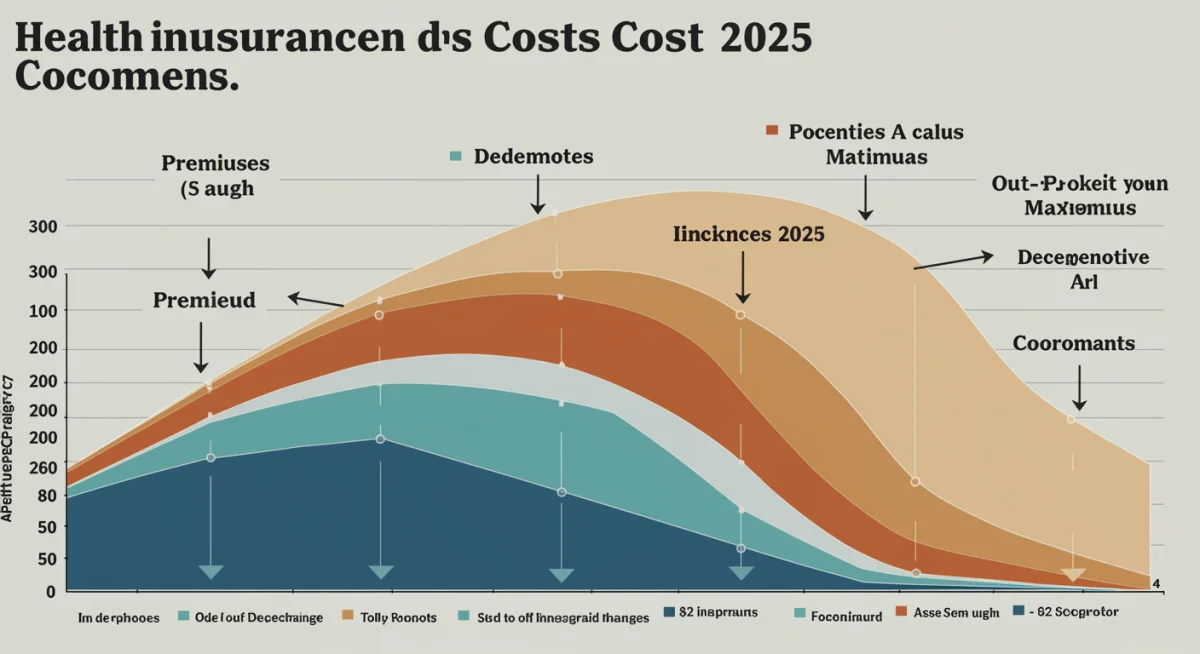Navigating 2025 Health Benefits: Key Changes and Coverage

Understanding the upcoming shifts in the healthcare landscape is crucial for informed decision-making. This guide details the five most significant changes to 2025 health benefits, impacting coverage, costs, and access for individuals and families.
As we approach 2025, understanding the evolving landscape of health benefits is more critical than ever. The changes ahead promise to reshape how individuals and families access and pay for healthcare. This article explores the five most significant shifts in 2025 health benefits changes, offering insights into what you can expect regarding coverage, costs, and overall healthcare management.
Understanding the Evolving Regulatory Landscape
The regulatory environment surrounding health benefits is dynamic, with new policies and adjustments frequently introduced to address healthcare access, affordability, and quality. For 2025, several key regulatory shifts are anticipated to influence everything from plan design to consumer protections. These changes often stem from ongoing efforts to refine the Affordable Care Act (ACA), respond to economic pressures, and integrate technological advancements into healthcare delivery.
Staying informed about these regulatory updates is not just for policymakers; it directly impacts how employers structure their offerings and how individuals choose their plans. These shifts can introduce new mandates, alter existing requirements, or provide new incentives for specific types of coverage or care models. Understanding the underlying motivations behind these changes can help predict their impact.
Impact of New Legislative Measures
New legislative measures are often the primary drivers of significant changes in health benefits. These can include federal laws, state-level initiatives, or even judicial rulings that redefine the scope of health insurance. For 2025, we anticipate continued focus on areas such as prescription drug pricing, mental health parity, and transparency in healthcare costs.
- Prescription Drug Reforms: Expect further implementation and potential expansion of policies aimed at lowering drug costs, particularly for seniors and those with chronic conditions.
- Mental Health Parity Enforcement: Increased scrutiny and stricter enforcement of laws requiring mental health benefits to be on par with medical and surgical benefits.
- Transparency Requirements: Enhanced regulations demanding greater transparency from hospitals and insurers regarding pricing and quality metrics, allowing consumers to make more informed choices.
These legislative measures aim to create a more equitable and understandable healthcare system, but they can also introduce complexities for both providers and consumers. Adapting to these new rules will be essential for all stakeholders involved in health benefits.
In conclusion, the regulatory landscape for 2025 health benefits is poised for significant evolution. These changes are designed to improve various aspects of healthcare, from affordability to access. Being aware of these shifts will empower individuals and employers to navigate the upcoming benefit year more effectively and make choices that align with their healthcare needs and financial goals.
Anticipated Changes in Premiums and Out-of-Pocket Costs
One of the most immediate and tangible concerns for anyone navigating health benefits is the impact on their wallet. For 2025, projections indicate a continued upward trend in healthcare costs, which will likely translate into adjustments in premiums, deductibles, copayments, and out-of-pocket maximums. Several factors contribute to these increases, including inflation, rising prescription drug prices, and the growing demand for specialized medical services.
Understanding the interplay between these cost components is crucial for budgeting and selecting the most appropriate health plan. A lower premium might come with a higher deductible, while a higher premium could offer more predictable out-of-pocket expenses. The goal is to find a balance that suits your individual or family’s healthcare utilization patterns and financial capacity.
Strategies for Managing Rising Costs
As costs continue to climb, individuals and employers will need proactive strategies to mitigate the financial impact. This involves exploring various plan designs and understanding how different choices affect your overall healthcare spending. It’s not just about the monthly premium; it’s about the total cost of care over the year.
- High-Deductible Health Plans (HDHPs) with HSAs: These plans often feature lower premiums and can be paired with Health Savings Accounts (HSAs), offering tax advantages for saving and spending on medical expenses.
- Telehealth and Virtual Care: Utilizing telehealth services for routine consultations and non-emergency issues can often be more cost-effective than in-person visits, reducing copayments and travel time.
- Preventive Care Utilization: Maximizing preventive benefits, which are typically covered at 100%, can help avoid more serious and costly health issues down the line.
Employers might also explore alternative funding arrangements, such as self-funded plans, or implement wellness programs designed to improve employee health and reduce overall claims. For individuals, price shopping for services and understanding network limitations will become even more important.
In essence, 2025 will likely bring continued challenges in managing healthcare costs. By understanding the factors driving these increases and adopting strategic approaches, consumers and employers can better prepare for and navigate the financial aspects of their health benefits, ensuring access to necessary care without undue financial strain.
Expansion of Telehealth and Digital Health Services
The rapid acceleration of telehealth adoption, largely driven by recent global events, is set to solidify its role as a cornerstone of healthcare delivery in 2025. This expansion goes beyond simple video consultations, encompassing a broader range of digital health services that promise to enhance access, convenience, and efficiency. From remote monitoring devices to AI-powered diagnostics, the digital transformation of healthcare is making care more accessible and personalized.
This shift is not merely a temporary trend; it represents a fundamental change in how medical services are delivered and consumed. Insurers and providers are increasingly investing in digital infrastructure, recognizing the potential for improved patient outcomes and reduced costs. For consumers, this means more options for receiving care, often from the comfort of their homes.
Benefits and Challenges of Digital Health Integration
The integration of digital health services presents numerous benefits, particularly in addressing geographical barriers and improving continuity of care. However, it also introduces challenges related to digital literacy, data security, and ensuring equitable access for all populations.
- Increased Access: Telehealth makes it easier for individuals in rural areas or those with mobility issues to connect with specialists and primary care providers.
- Convenience and Efficiency: Reduced travel time, shorter waiting periods, and flexible scheduling contribute to a more patient-centric experience.
- Enhanced Chronic Disease Management: Remote monitoring tools allow healthcare providers to track patient conditions continuously, enabling timely interventions and personalized care plans.
Despite these advantages, concerns about data privacy, the digital divide, and the need for robust cybersecurity measures remain paramount. Ensuring that all patients, regardless of their technological proficiency or socioeconomic status, can benefit from these advancements is a critical consideration for 2025 health benefits.
Ultimately, the expansion of telehealth and digital health services in 2025 will redefine the patient experience. While challenges persist, the overarching trend is towards a more connected, convenient, and patient-focused healthcare system. Embracing these technological advancements will be key to optimizing health benefits and achieving better health outcomes for a broader population.
Focus on Mental Health and Wellness Benefits
There is a growing recognition within the healthcare industry that mental health is just as crucial as physical health. For 2025, we anticipate an even greater emphasis on mental health and wellness benefits, moving beyond basic coverage to include more comprehensive support systems. This shift is driven by increased awareness, reduced stigma, and a clearer understanding of the profound impact mental well-being has on overall health and productivity.
Employers and insurers are responding by enhancing access to mental health professionals, expanding coverage for various therapies, and integrating wellness programs that address stress, resilience, and emotional well-being. This integrated approach aims to provide holistic care, acknowledging the interconnectedness of mind and body.

Key Enhancements in Mental Health Coverage
The enhancements in mental health coverage for 2025 are expected to be multifaceted, reflecting a commitment to parity and accessibility. This includes not only broader coverage for traditional therapy but also innovative approaches to mental wellness.
- Expanded Provider Networks: Efforts to increase the number of in-network mental health professionals, including therapists, psychiatrists, and counselors, to reduce wait times and improve access.
- Digital Mental Health Platforms: Greater integration of apps and online platforms offering therapy, mindfulness exercises, and mental health support, often available 24/7.
- Preventive Mental Health Programs: Introduction of wellness initiatives focused on stress reduction, resilience building, and emotional intelligence to proactively support mental well-being.
Furthermore, many benefits packages will likely include Employee Assistance Programs (EAPs) with more robust mental health resources, as well as educational campaigns to destigmatize mental health issues and encourage early intervention. The goal is to create a supportive environment where individuals feel comfortable seeking help.
In conclusion, the reinforced focus on mental health and wellness benefits in 2025 signifies a progressive step towards comprehensive healthcare. By prioritizing mental well-being, health plans are not only addressing a critical need but also contributing to a healthier, more productive workforce and community. Understanding these expanded benefits will be vital for maximizing your health plan’s potential.
Personalized Health Plans and Preventive Care Incentives
The future of health benefits in 2025 is moving towards greater personalization, recognizing that a one-size-fits-all approach no longer meets the diverse needs of individuals. This trend is coupled with a strong emphasis on preventive care, with insurers and employers increasingly offering incentives to encourage healthy behaviors and proactive health management. The aim is to shift from reactive treatment of illness to proactive promotion of well-being, ultimately leading to better health outcomes and reduced long-term costs.
Personalized health plans leverage data analytics and advanced technology to offer tailored recommendations and coverage options based on an individual’s health profile, lifestyle, and preferences. This can include anything from customized fitness programs to specific dietary guidance, all integrated within the benefit structure.
Incentives for Proactive Health Management
To encourage engagement with preventive care, various incentives are being introduced or expanded. These programs are designed to reward individuals for making healthy choices and participating in activities that promote their well-being.
- Wellness Program Rewards: Financial incentives or reduced premiums for participating in health assessments, biometric screenings, and wellness challenges.
- Chronic Disease Management Programs: Specialized support and resources for individuals managing chronic conditions, often including access to health coaches and educational materials.
- Personalized Health Coaching: Access to professional health coaches who can provide tailored guidance on nutrition, exercise, stress management, and other lifestyle factors.
The integration of wearable technology and health apps also plays a significant role, allowing individuals to track their progress and share data with their healthcare providers, leading to more informed and personalized care. These tools empower individuals to take a more active role in managing their health.
In summary, the move towards personalized health plans and robust preventive care incentives in 2025 represents a significant evolution in health benefits. By focusing on individual needs and encouraging proactive health management, the aim is to create a healthier population, reduce healthcare expenditures, and enhance the overall quality of life. Engaging with these personalized options and incentives will be key to maximizing your health benefit value.
Impact of Artificial Intelligence and Data Analytics
The integration of Artificial Intelligence (AI) and data analytics is rapidly transforming the healthcare landscape, and its impact on 2025 health benefits will be profound. These technologies are being leveraged to optimize everything from claims processing and fraud detection to personalized treatment plans and predictive health insights. The ability of AI to process vast amounts of data quickly and accurately is revolutionizing how healthcare is administered, delivered, and funded.
For individuals, this means more efficient administrative processes, potentially faster approvals for services, and more precise risk assessments that could influence plan design and pricing. For providers and insurers, AI and data analytics offer powerful tools to identify trends, improve operational efficiencies, and develop more effective interventions.
AI’s Role in Optimizing Health Benefits
AI and data analytics are not just buzzwords; they are becoming integral to the practical application of health benefits. Their capabilities extend across various aspects of the healthcare ecosystem, offering tangible improvements.
- Predictive Analytics for Health Risks: AI can analyze patient data to predict potential health issues, allowing for early intervention and preventive care strategies.
- Personalized Treatment Recommendations: By evaluating vast medical literature and patient histories, AI can assist clinicians in developing highly personalized and effective treatment plans.
- Streamlined Claims Processing: Automation through AI can significantly speed up the processing of insurance claims, reducing administrative burdens and improving efficiency.
Furthermore, AI is instrumental in identifying patterns of fraud and abuse, which helps control costs and ensures that resources are allocated appropriately. This technological advancement promises a more intelligent, responsive, and ultimately more effective health benefits system for 2025 and beyond.
In conclusion, the growing influence of AI and data analytics is set to redefine 2025 health benefits, making them more efficient, personalized, and proactive. While ethical considerations and data privacy remain important discussions, the potential for these technologies to enhance healthcare access, quality, and affordability is immense. Understanding how AI impacts your benefits will be crucial in navigating the future of healthcare.
| Key Change | Brief Description |
|---|---|
| Regulatory Shifts | New laws impacting drug pricing, mental health parity, and cost transparency. |
| Cost Adjustments | Anticipated increases in premiums, deductibles, and out-of-pocket expenses. |
| Telehealth Expansion | Increased integration of virtual care and digital health services for convenience. |
| Mental Health Focus | Enhanced coverage and integrated wellness programs for mental well-being. |
Frequently Asked Questions About 2025 Health Benefits
Key regulatory changes for 2025 include continued reforms in prescription drug pricing, stricter enforcement of mental health parity laws, and expanded requirements for healthcare cost transparency. These aim to improve affordability and access, shaping how plans are designed and offered to consumers.
Anticipate a likely increase in premiums and out-of-pocket costs due to inflation, rising drug prices, and increased demand for specialized care. Strategies like utilizing HDHPs with HSAs and maximizing preventive care can help manage these rising expenses effectively.
Telehealth and digital health services are expected to expand significantly, offering more convenient and accessible care options. This includes broader virtual consultations, remote monitoring, and digital platforms for various health needs, becoming a standard component of many plans.
Yes, 2025 will see an enhanced focus on mental health and wellness. This includes expanded provider networks, increased coverage for various therapies, and integrated wellness programs designed to support overall emotional well-being, reflecting a holistic approach to health.
AI and data analytics will streamline claims processing, offer personalized care recommendations, and provide predictive health insights. These technologies aim to make health benefits more efficient, tailored to individual needs, and proactive in identifying potential health risks.
Conclusion
The landscape of health benefits is continually evolving, and 2025 promises a series of significant changes that will impact coverage, costs, and the way healthcare is accessed. From new regulatory frameworks and anticipated cost adjustments to the pervasive expansion of telehealth, a heightened focus on mental wellness, and the transformative power of AI, understanding these shifts is paramount. Proactive engagement with these developments, informed decision-making, and leveraging available resources will be crucial for individuals and employers alike to navigate the upcoming benefit year successfully. Staying informed and adapting to these changes will ensure that you can optimize your health benefits and maintain access to quality care in the years to come.
